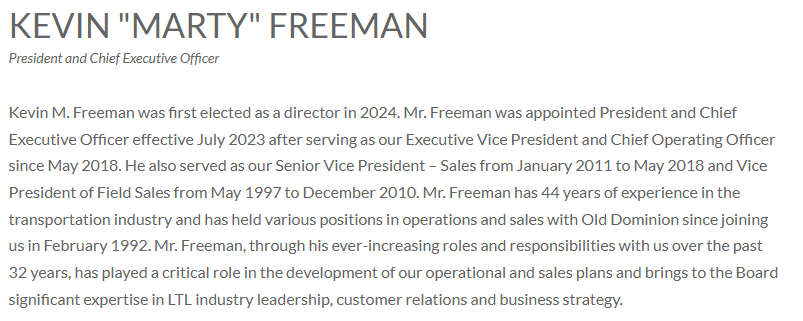Analyzing a company is the cornerstone of making sound investment decisions. A structured framework is essential to gain a clear understanding of the business, its financial health, and the industry it operates in.
One of the great things about writing investment cases is that you can apply the same structured approach to each one. This consistency means that the more cases you write, the sharper your skills will become. I'll guide you through the process step by step
Here are the rest of the articles in the series where I go in-depth into each of the sections mentioned below:
If you missed the previous post in this series, check it out:
Analyzing Moat - Does the Company have a Competitive Advantage?
Management Analysis - The Ultimate Edge in Long-Term Investing
The first step to thinking like an analyst is to cultivate a curious, probing mindset, whether you're focused on growth or value. Using a clear framework and checklist will help you systematically evaluate each opportunity to ensure every critical criterion is met before making a decision. Essentially, it’s like being a detective, digging through all publicly available information to uncover the truth. Good this all this information is publicly available. I will always start with the company’s annual report - 10K.
In my previous Article, where I analyzed ODFL I provided the steps I follow to analyze a company. In case you missed it you can check it out here. In this post, I will go over the information I look for under each of the items.
1. General Information
Before diving into the business look at the basic overview of the business, including details like its name, location, primary products or services, target market, company mission and vision, key leadership, and sometimes even a brief history of the company, essentially giving you a foundational understanding of what the company does and who they are aimed at.
This informaiton provides you if the business falls under your “Circle of Competence”. As an investor, I am do not cimpletely understand some businesses (Pharma, banks, etc) and I try to stay away from them.
2. Business Model
First thing to understand about a business is:
How does the company make Money?
Do I understand all their products & services?
Are they complementing products in the same industry or all over the place
Revenue Split
What different segments does the company make money? Geographical split?
Will the company be relevant in 10 years?
3. Management - Track Record & Skin in the Game
I would like to invest in companies that are run my great managers.
Looking at the current management’s background, their track record and I would prefer to invest in companies where they have “Skin in the game”, meaning they own a lot of stock in the company & the compensation structure is heavily skewed towards long-term stocks vs cash.
You can look at management background in their website
You can find the compensation planning under “Scheduled 14 A” document:
4. Moat - Does the company have a competitive advantage
What is Moat?
An economic moat refers to a company with a long-term, sustainable competitive advantage, which protects its profits from competitors and external threats.
If a business is said to have an economic moat, or “moat,” for short, then it has a differentiating factor enabling the company to hold a competitive edge.
The barrier to entry: It is a very capital-intensive industry and it is very hard for a new player to enter. Even if a company with capital enters the market, it is hard to build the network, trust, and performance of ODFL.
Margins: Does the company have the privelage to maintain prices in the competitive market. ODFL is maintaining strong Gross Margins of ~40% and ROIC of ~25%, Which are high compared to the industry average of 20% &13% respectively.
5. Risks
This is the one of the hard thing as an investor to do. I truly believe that “Risk is what left over after we have looked for everything”. It is impossible for anyone to know all the risks, so as an investor we should strive to buy a company where risk is less.
I would start with the 10K, Company has to provide all the risks they foresee and this section goes from “Highest to least” risk level. Also, I would read analysts reports to better understand the headwinds the company is facing.
6. Growth, Profitability & Health of Balance Sheet
Did the company grow at a good rate in the past?
Since IPO, ODFL has grown greater than 28% CAGR (my threshold>13%, 3% over the average market return)
Source: ODFL 10-K presentation
Profitability:
Higher the better: Things I look for are:
Gross Margin >35%
Net profit Margin >10%
Free cash flow margin >10%
7. Capital AllocationHow Companies Allocate Free Cash Flow
When a company generates free cash flow (FCF), it has several options for how to allocate that capital:
Reinvest in the Business
Reduce Debt
Mergers & Acquisitions (M&A)
Dividends
Share Buybacks
Best management does a great job at allocating capital to improve shareholder returns in the long term. Return on Invested Capital is a great way to see management’s performance
I would like to invest in companies with:
ROIC>20% (I would be okay with >15% if its trending upwards in the recent years)
ROE>20%
ODFL is reinvesting in service centers & tractors to grow
Source: ODFL 10-K presentation
8. Future Growth Expectations - Company’s guidance & Analysts expectations
Outlook: In the long-run, companies stock price always follows the earnings growth
Revenue Growth 2-year CAGR: >5%
EPS Growth 2-year CARG: >8%
ODFL has been gaining market share from the last 20 years and all the capital deployed in the recent years will help them gain further market share
Source: ODFL 10-K presentation
9. Valuation
“Price is what you pay and value is what you get”
To understand the value of a company I prefer a few methods:
Reverse DCF - understand growth rates that are already baked into the current stock price.
Reverse DCF is a quick & easy way to understand if the current price and the expected growth rates are acheivable by the management and is there enough “Margin of Safety” in the current price
I will go over in detail in a different post to explain Reverse DCF analysis.
Earnings Growth Model:
Expected return = Earnings growth + Shareholder Yield +/- PE Expansion
This will tell us as an Investor how much annual return you can expect investing in the stock
Comparing to historical performance: This will help us understand if the current PE ratio is higher compared to historical average.
If PE is higher, that does not mean the stock is overvalued. It means we as an investor need to dig in to better understand if the high growth expectations are acutally acheivable, what new investments the company has done recently that will help to acheive that high expected growth.
10. Final Thoughts & Recommendations
Once the analysis is complete, it's time to step back and evaluate the bigger picture. As an investor, ask yourself: Is this a fundamentally strong business led by skilled managers who excel at capital allocation? Moreover, at the current price, does it offer a sufficient Margin of Safety that aligns with your risk tolerance and investment strategy?
That’s it for today!
These articles take a lot of time to research and write. You can support my work by liking, subscribing and sharing the article with anyone you think will benefit.
Incase you missed my previous articles you can find them here.












Thanks for sharing this. Interesting read!
“I will go over in detail in a different post to explain Reverse DCF analysis"
--
Has the work finished?